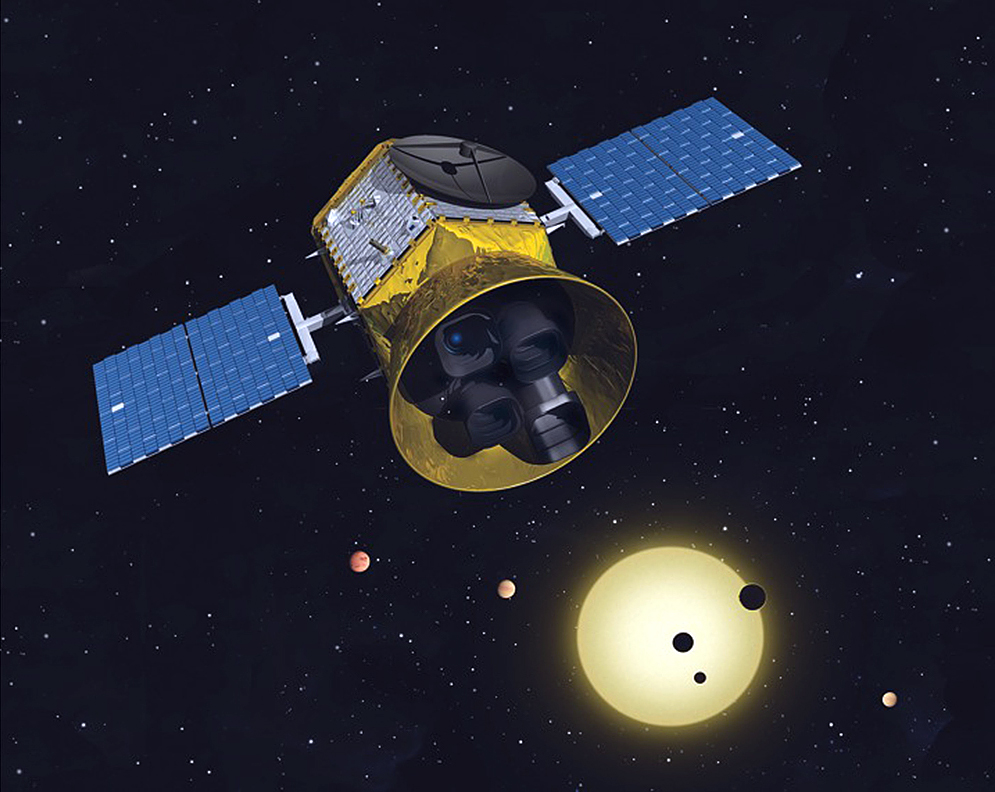After the colossal amount of time spent on designing, developing, and integrating the Transiting Exoplanet Survey Satellite (TESS), it was finally launched on April 18, 2018, aboard SpaceX Falcon 9 rocket. It is expected to scan over 200,000 brightest or nearest stars in order to capture exoplanets using sophisticated transit technique which it will use to intercept even the feeble dimming of brightest from the stars that are being observed which is the technique used to detect the existence of exoplanets.
The Kavli Foundation interview two of the scientists associated with TESS mission in order to understand how the spacecraft will hover in the space looking for exoplanets throughout our galaxy and beyond. Diano Dragomir, Hubble postdoctoral fellow at MIT Kavli Institute for Astrophysics and Space Research and the Instrument Manage for the TESS mission, Greg Berthiaume were the participants who were interviewed post the launch of the spacecraft into the deep space to look for other Earth-like planets.
When asked why is TESS important, Diano replied that the mission is destined to find exoplanets. She further asserted that although we already know about 4,000 exoplanets in the space thanks to the Kepler K2 mission, these exoplanets are looking at a huge distance and scientists know very little about them which makes TESS is prime spacecraft to look for exoplanets which are located near our planet.
A question which have been intriguing researchers for a long time is that if there is any alien form out there in the universe or not? TESS mission will be a step towards knowing the potential planets habitual enough to sustain life and this could help detect alien life as well. According to the researchers, there are looking forward to finding at least 100 to 200 Earth-sized planets as well as thousands of other exoplanets which are Super Jupiters.
With the TESS mission, researchers will aim towards finding out the size of the exoplanets, mass, composition of the atmosphere if available, characteristics of gravity. It will also look for exoplanets which are in Goldilocks zones which is a scientific term to indicate the right condition for a planet to sustain life. This will be the imperative target of the mission to detect planets which aren’t too cold neither too hot. It will also look out for red dwarf stars which are smaller than the sun and cooler in temperature. Researchers will study if there is any planet near the red dwarfs and also check out its orbit crossings to detect if the planet is in Goldilocks zone or not.
TESS will look after planets which have a greater amount of atmosphere since the technique used in detecting exoplanets known as transit spectroscopy uses the light derived from the atmosphere of an orbiting planet when it makes it transit through its host star. The larger atmosphere gives a lot of data to be analyzed while smaller atmosphere will result in feeble data. Since studying the atmosphere is crucial to know about its chemical composition comprising of carbon dioxide, oxygen, and water vapor, this would be instrumental in analyzing if life can exist on it or not.
TESS mission will search for planets which are smaller than Neptune and larger than Earth. As there are a lot of planets smaller than Neptune, it would be easier for TESS to hunt ‘em. Soon after, the spacecraft will be programmed to scan for super-Earths as well which are planets twice the size of Earth. It is well-equipped with instruments to differentiate between a gassy planet and a very rocky planet which would help the researchers in segregating the data sent by the spacecraft for analysis.
Apart from TESS, there are two other major exoplanet-hunting spacecraft that will launch soon such as ESA’s Ariel and Plato satellite. However, since TESS has been launched quietly before the other two spacecraft can be launched, it has greater options to analyze. Furthermore, TESS will follow a really long and elliptical orbit that will keep it stable from both thermal and orbit perspective. It will be the first spacecraft to be launched in a far-ranging elliptical orbit as said where it will reach after six weeks post-launch.
Apart from detecting habitual and non-habitual exoplanets, the spacecraft is equipped with instruments to gauge the sound waves that travel within the stars as the brightness changes which is homologous to how seismic waves travel on Earth. Then, it will study the flaring activity of the host stars in close-up. One of the biggest technological feature installed in TESS is to detect and collect data about small black holes which form at the ‘Singularity’ when a star explodes. The data collected by TESS will be instrumental in determining the subject of study once NASA’s James Webb Space Telescope (JWST) launched in May 2020. This is how the exoplanet hunter will move around in space during its course of the mission.
